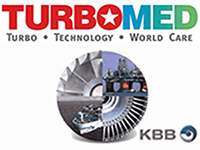Can I Do a Roth Conversion in Retirement Without Earned Income?
In short, the source of a Roth contribution is earned income. The source of a Roth conversion is a tax-deferred retirement account. (Roth conversions are just one type of tax-planning strategy that a financial advisor may be able to help you with.)
Limitations
While Roth contributions are limited in a number of ways, there are no limits whatsoever on Roth conversions.
For tax year 2025, the Roth IRA contribution limit is $7,000 for those under 50 and $8,000 for those 50 and older. There are no limit on the amount of money you are allowed to convert, however.
You’ll also want to keep the income limits in mind. If your earned income is too high, you cannot contribute to a Roth IRA at all. In 2025, that limit is $165,000 for single tax filers and $246,000 if you’re married and file jointly.
While not everyone can contribute directly to a Roth IRA, there is no income limitations on Roth conversions. Bill Gates could do a Roth conversion if he wanted to. (But if you need additional help navigating the rules surrounding Roth accounts, consider working with a financial advisor.)
Roth Accounts in Workplace Retirement Plans
A related issue that is often the source of confusion is the treatment of Roth accounts within workplace retirement plans.)
Often, retirement savers believe that the same income restrictions that prevent them from contributing to a Roth IRA also prevent them from contributing to a Roth 401(b) or Roth 403(b). However, that is not true. The Roth IRA income limits do not apply to designated Roth accounts within workplace retirement plans.
As a result, a single person who earns over $165,000 in 2024 could contribute up to $23,500 to a Roth 401(k), if their employer offers this account option. (If you need advice on how to split your retirement savings contributions between pre-tax and Roth accounts, consider talking it over with a fiduciary financial advisor.)
Bottom Line
Roth contributions and Roth conversions are not the same thing, and they are not bound by the same rules. Any amount you convert will be included in your taxable income in the year of the conversion, but then qualified withdrawals will be tax-free in the future. Roth conversions can be part of an effective tax-planning strategy, but you shouldn’t do them without careful analysis.
Tips for Executing a Roth Conversion
-
Converting a large retirement savings balance into a Roth IRA all at once can have serious tax implications. That’s why you may want to consider a more gradual approach that sees you convert your pre-tax savings into a Roth account over the course of several years. That way, you can spread the tax hit more evenly, and potentially avoid jumping into a higher tax bracket.
-
A financial advisor may be able to help plan your Roth conversions. Finding a financial advisor doesn’t have to be hard. SmartAsset’s free tool matches you with up to three vetted financial advisors who serve your area, and you can have a free introductory call with your advisor matches to decide which one you feel is right for you. If you’re ready to find an advisor who can help you achieve your financial goals, get started now.
-
Keep an emergency fund on hand in case you run into unexpected expenses. An emergency fund should be liquid -- in an account that isn't at risk of significant fluctuation like the stock market. The tradeoff is that the value of liquid cash can be eroded by inflation. But a high-interest account allows you to earn compound interest. Compare savings accounts from these banks.
-
Are you a financial advisor looking to grow your business? SmartAsset AMP helps advisors connect with leads and offers marketing automation solutions so you can spend more time making conversions. Learn more about SmartAsset AMP.
Brandon Renfro, CFP®, is a SmartAsset financial planning columnist and answers reader questions on personal finance and tax topics. Got a question you’d like answered? Email
Please note that Brandon is not a participant in the SmartAsset AMP platform, is not an employee of SmartAsset, and has been compensated for this article.
Photo credit: ©iStock.com/Cecilie_Arcurs, ©iStock.com/AndreyPopov
The post How Can I Do a Roth Conversion in Retirement If I Don’t Have Earned Income? appeared first on SmartReads by SmartAsset.
Content Original Link:
" target="_blank">

































































